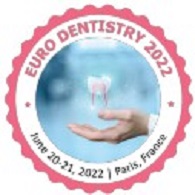
Prof. Mahmoud Al Ankily
Department of Oral Biology, The British University in Egypt, Cairo, Egypt
Title: Effect of Different Scaling Methods and Materials on the Enamel Surface Topography: An In Vitro SEM Study
Biography
Biography: Prof. Mahmoud Al Ankily
Abstract
Scaling is important for maintenance of gingival and periodontal conditions. These procedures have a harmful effect on the dental hard tissues. The aim of this study was to investigate the effects of hand and ultrasonic instruments made of stainless and titanium on the surface properties of enamel. Materials and Methods: Forty extracted premolars were used in this in vitro study and were randomly divided into four groups (n = 10).Group I received ultrasonic scaling with stainless steel tip, group II received ultrasonic scaling with titanium tip, group III hand scaling with stainless steel tip, and group IV hand scaling with titanium tip. Scanning electron microscopy (SEM) was used to examine the enamel surface morphology. Surface roughness of enamel was measured at baseline and after the scaling simulation using atomic force microscopy (AFM). Differences between initial and final measurements of surface roughness (ΔRa) were analyzed using two-way analysis of variance (ANOVA) followed by post hoc pairwise comparisons between groups. Results: SEM revealed deeper scratches and more destructive changes on enamel surface in group IV, whereas other groups revealed less change. AFM revealed that a mean surface roughness difference (ΔRa) had the highest value with hand instruments using titanium curettes, whereas the lowest difference was found with ultrasonic tips using stainless-steel tips. Hand titanium curettes showed a statistically significant increase in ΔRa when compared to hand stainless steel curettes (P = 0.02) and ultrasonic titanium tips (P = 0.01). Hand stainless steel tips showed a statistically significant increase in ΔRa when compared to ultrasonic stainless steel tips (P = 0.02) and hand titanium curettes (P = 0.02).
Conclusion: Scaling using ultrasonic stainless steel tips produce the least amount of surface roughness and damage to the tooth surface.

